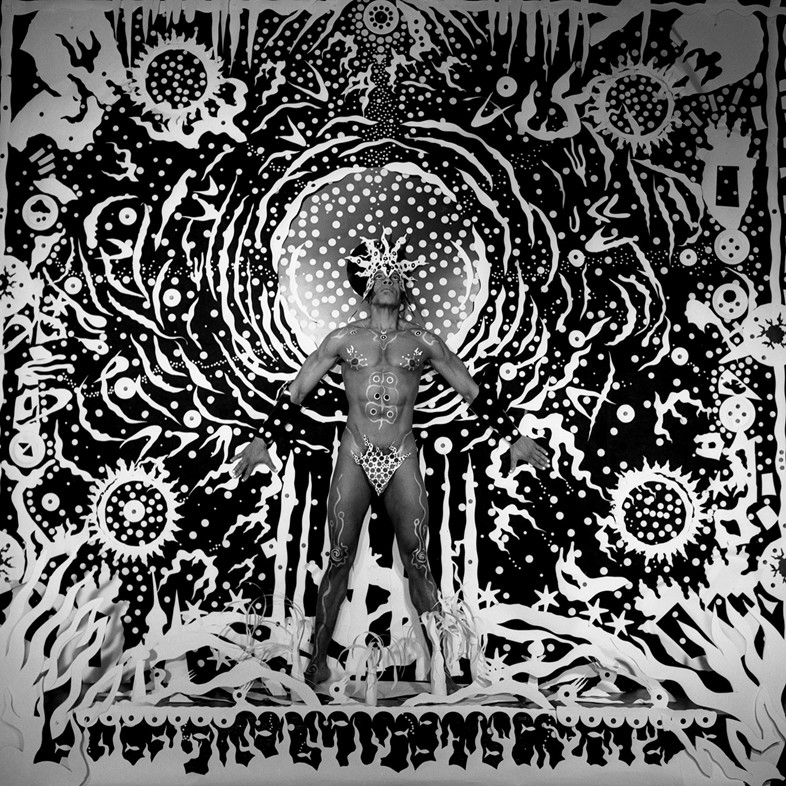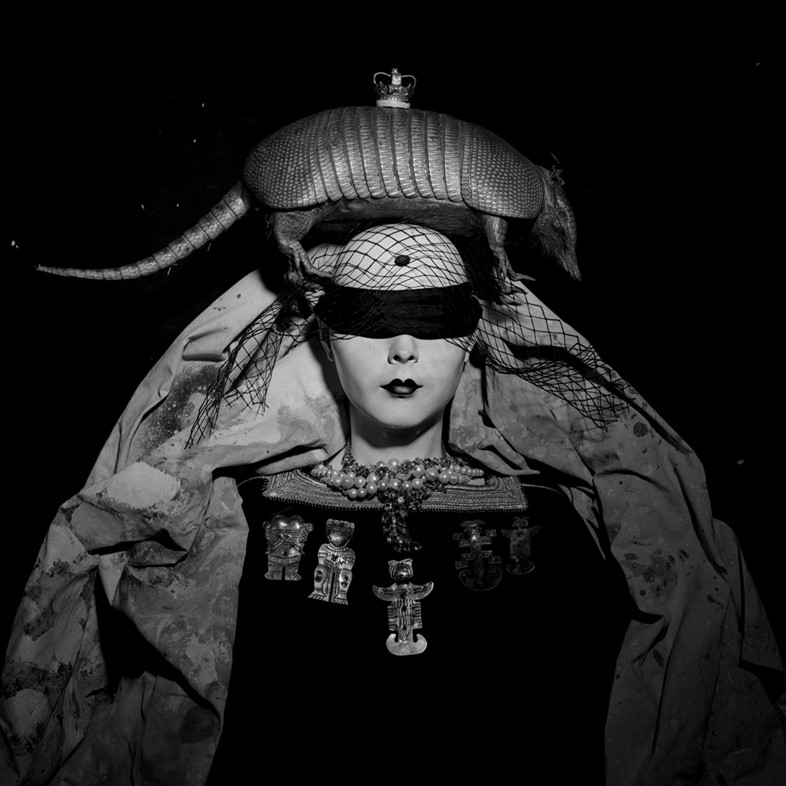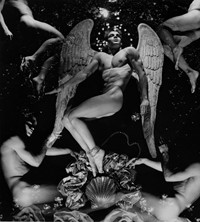The subject of a new documentary and now an exhibition at Paris Photo, Steven Arnold was an artist with far-reaching ideas
- TextMiss Rosen
Artist, photographer, filmmaker, and “queer mystic” Steven F. Arnold (1943–1994) is a quintessential icon of our times, a revolutionary figure whose ideas about gender fluidity, radical acceptance, and non-binary consciousness, first realised in the late 1960s, are just now becoming part of the cultural conversation.
Protégé of Salvador Dalí and shared encounters with Debbie Harry, Anjelica Huston, Antonio Lopez, and Joni Mitchell, Arnold seamlessly weaved celebrity, glamour, and camp theatricality with ancient ritual, two-spirit philosophy, and eastern art into a majestic Baroque-inspired tableaux that will be on view at Fahey/Klein Gallery during Paris Photo next week.
“Steven was a prophet,” says Vishnu Dass, director of the Steven Arnold Museum and Archive and director of Steven Arnold: Heavenly Bodies, a documentary about the artist’s life which came out earlier this year. “He visually fused his interests in filmmaking, spiritual traditions, sexuality, and gender to present a new visual mythology crafted for the late 20th century.”
The roots of Arnold’s art and philosophy run deep, dating back to his formative years in Oakland, California, during the 40s and 50s. A precocious child, Arnold discovered a chest of theatrical costumes and make-up belonging to his uncle, a former vaudeville performer, in his parents’ attic, and began creating a theatrical world wholly his own. “He preferred spending time alone and wasn’t really interested in other children until it was time to premiere his latest puppet play,” Dass says.
Friendship would come when Arnold enrolled in Oakland Technical High School, where he met Pandora, the woman who was to become his lifelong confidant and muse. “Steven and Pandora spent long hours in Steven’s bedroom, painting and dressing each other, and became extremely close,” Dass says. “They started what Pandora called their ‘church’ and explored interests in art, vintage clothing, antiques, theatre and drag, as well as religious, metaphysical, and occult symbolism.”
By the early 1960s, Arnold had developed a style that influenced the emerging counterculture. “I believe it was Steven who actually initiated hippie dress in San Francisco, long before it was fashionable,” artist Ira Yeager has said. “He always wore vintage clothing, carried a cane, top hat, spats, and was always decorated with loads of rings and jewellery. Steven was very shy, and though he often appeared glazed from all of the Romilar cough syrup and marijuana, he was deeply involved with Jungian theories and the unconscious – long before anyone else was.”

While studying film at the San Francisco Art Institute during the mid 60s, Arnold created Luminous Procuress and Messages, Messages – two groundbreaking works of cinema that synthesised 1920s glamour, surrealist film, the work of George Méliès, and various esoteric traditions. Messages, Messages went on to be screened at Cannes Directors’ Fortnight before becoming the inspiration for Arnold’s weekly Nocturnal Dreamshows, inaugurated in March 1968 at the Palace Theatre in San Francisco’s North Beach, a hippie bacchanalia that drew the likes of Truman Capote, Janis Joplin, and Tennessee Williams.
The first midnight movie showcase of its kind, the Nocturnal Dreamshows featured old surrealist films, turn-of-the-century French narratives, German expressionist films, classic cartoons, and sci-fi and cult classics such as Freaks. It was also the launch pad for The Cockettes, a group of rag-tag, acid-drenched, glamour-cacophonies from a local commune who went on to become an influential theatre troupe featuring ensemble members such as Divine and Sylvester.
In 1972, Arnold met Salvador Dalí at a screening of Luminous Procuress at the Whitney Museum of American Art, and later brought stills from the film to Dalí at the St. Regis hotel. “Dalí shrieked with joy at the arresting images, dubbed Steven the ‘little prince’ of his court of miracles, and arranged a star-studded screening at the Grand Ballroom of the hotel,” Dass says.

Two years later, Dalí invited Arnold to Spain to assist with the completion and inauguration of the Teatro Museo Dalí, an experience that grounded Arnold’s artistic vision through close observation and experience. “The surrealist principle of bridging reality and the unconscious into art forms that would encourage a shift in consciousness had a lasting impact, and informed Steven’s work and philosophy greatly,” Dass explains.
In the early 1970s, Arnold moved to Los Angeles, where he opened a photography studio that soon became safe a haven for artists, misfits, drag queens, musicians, hustlers, and designers alike. Here, he began creating his masterworks, a series of black and white tableaux photographs that combined painting, drawing, set and costume design, assemblage sculpture, theatre, philosophy, and myth into a mesmerising kaleidoscope celebrating sexuality and gender at the dawn of the Aids crisis, which would eventually claim his life.
“The polarities of life can be broken down into love and fear. Steven unabashedly chose love,” Dass says. “His work lovingly bridges shadow and light, piousness and profanity, solar and lunar, masculine and feminine, camp and glamour, all with profound attention and reverence. He created a sort of iconographic yin yang, in which polarities have melded into a unified grey – that’s where true freedom lies.”
Steven Arnold: Heavenly Bodies will be screened at Paris Photo from November 7 – 10, 2019.















